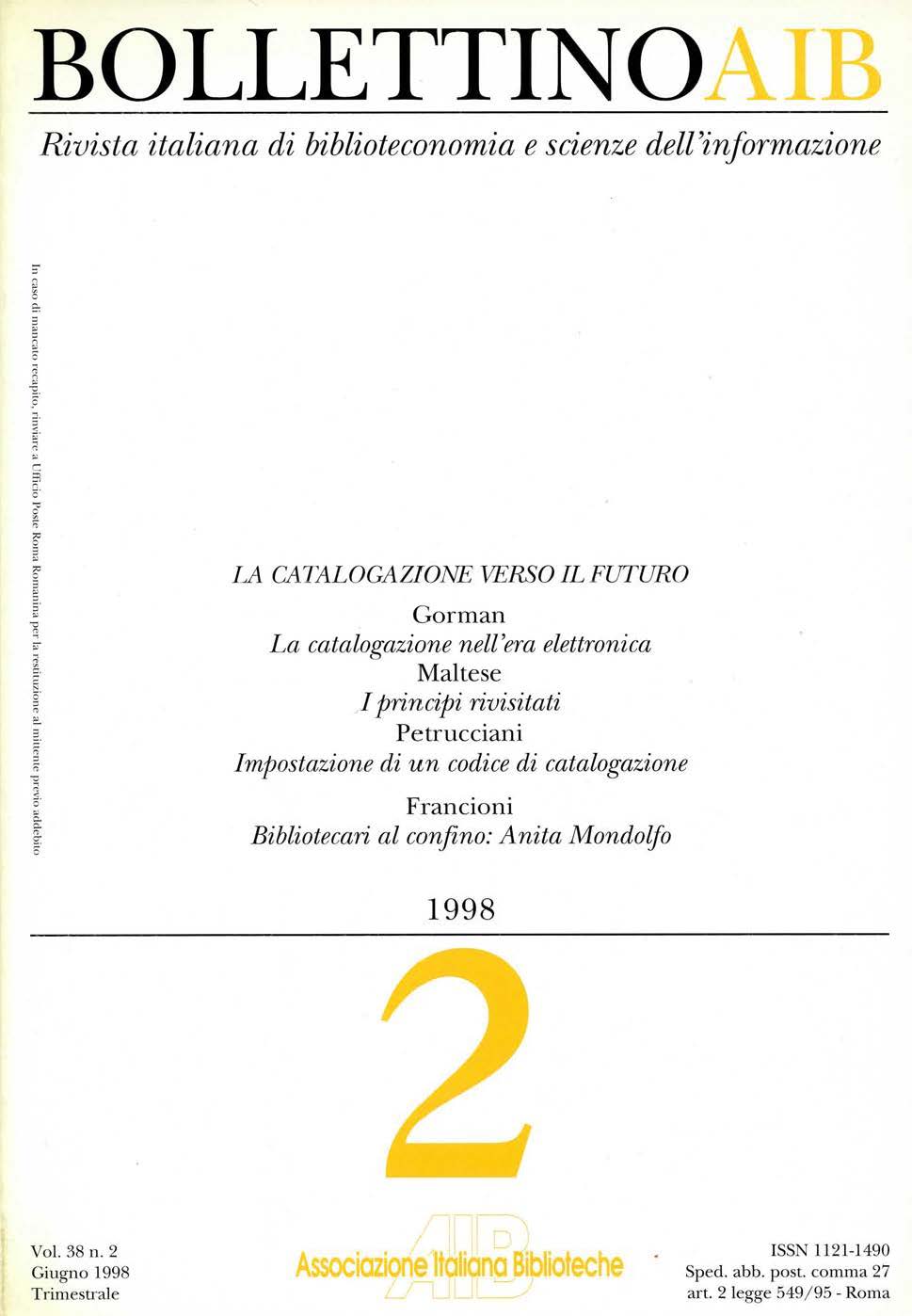Il futuro della catalogazione nell'era elettronica
Contenuto principale dell'articolo
Abstract
We cannot answer the question "What is the future of cataloguing and cataloguers?" until we answer the question "What is the future of libraries?". We cannot answer that question until we answer "What is the future of reading, literacy, and learning?", which, in turn, depends on the answer to «What is the future of society and of our civilization?".
There are many negative trends and influences in the world, many developments that threaten society and civilization. We have the means to counter them, though, in the human spirit, human ideals and values, human realities and capabilities, and in education buttressed by an understanding of history. The truth can make us free and we can find truth within ourselves, our profession, and communities.
The bibliographic structure is the element that binds collections and staff together to create the library community, the innermost of ever widening circles of community. Once that library community is created, it can reach out to and serve the wider academic community and the locality and region of which the academic community is a part. Through cooperation and interaction with other libraries and sources of recorded knowledge and information, the original library community becomes part of, and an element in, the global community and, thus, plays its part in the preservation and advancement of civilization.
Civilization is defined by the ability of individuals and society to understand the lessons of the past; apply the knowledge of the past to present problems, issues, and circumstances; and to create new knowledge and understanding and, in doing so, shape the future. There are, essentially, only two ways in which we learn and, thereby, have at least the possibility of realizing our higher aspirations. The first is the interaction of teacher and pupil; the second is the individual study of recorded knowledge, principally, but not exclusively, in the form of texts.
In order to evaluate the usefulness of any medium of communication, we must understand the intrinsic nature of what is being communicated. Information consists of facts, data, images, and short discrete texts that can be used alone. Recorded knowledge is complex, sequential, and discursive. The context of any part of it is an essential attribute. Information is peculiarly amenable to being stored, made accessible, and transmitted by electronic means and the older forms of communication are best for storing, making accessible, and preserving recorded knowledge. The library of the future will possess and house or give access to complex, integrated, pan-media collections.
One of the most inspiring ideas of the last decades is Universal Bibliographic Control. The integrated library of the future will need a bibliographic structure if it is to play a part in the global network of bibliographic control that will realize UBC and make it possibile for all the libraries in the world to share their resources.
The question is which electronic documents among the millions are worth cataloguing and preserving? In the author's opinion, those which I would have added to the collection if they were in print.
According to the author AACR2 are a satisfactory basis for a "world cataloguing code". Part 1 contains the most thorough working out of the ISBDs and is so structured as to be hospitable to new formats and new ISBDs. Part 2 is clearly based on English-language practice, but the principles are universally applicable. The family of ISBD documents is the most internationally accepted bibliographic standards ever. They are a vital component of the architecture of UBC and have been incorporated into AACR2 and all other recent cataloguing codes. They have proven to be hospitable to the description of electronic documents, a development that will undoubtedly lead to a revision of the relevant chapter in AACR2.
The vocabulary of subject headings has been criticized for years, but the flaws in that vocabulary can be remedied, especially in an age of online catalogues. The structure of such lists, on the other hand, is basically sound and especially suitable for use in online systems.
It is possible to take advantage of an effort to catalogue a wide range of electronic documents by creating a new MARC format for those records before they get too numerous.
For cataloguers, the future is challenging and bright. We must maintain the bibliographic structures that we have built and expand and develop them in two ways. First, by ensuring that worthwhile electronic documents are organized and preserved so that they can be made available to future generations. Second, by improving bibliographic standards world-wide and ensuring that they reach a level of standardization that makes possible a new level of global cooperation.
Dettagli dell'articolo

Questo lavoro è fornito con la licenza Creative Commons Attribuzione - Condividi allo stesso modo 4.0.
